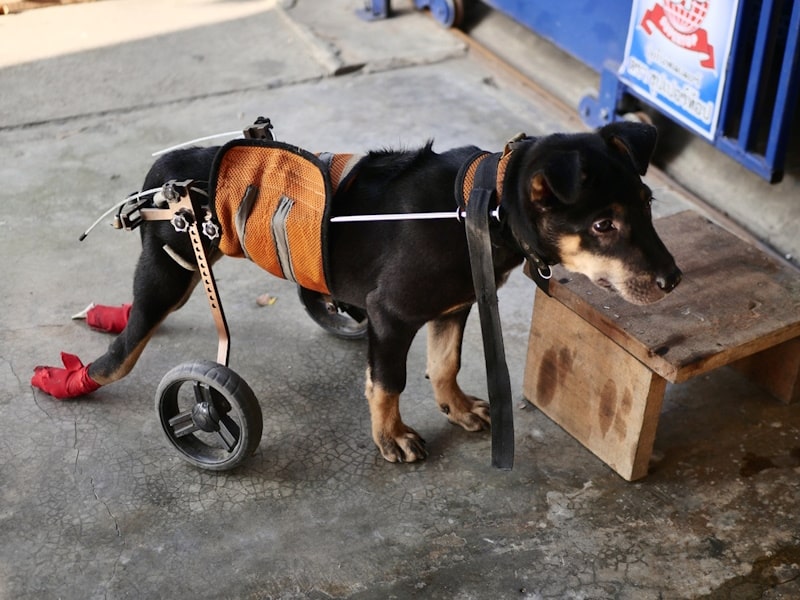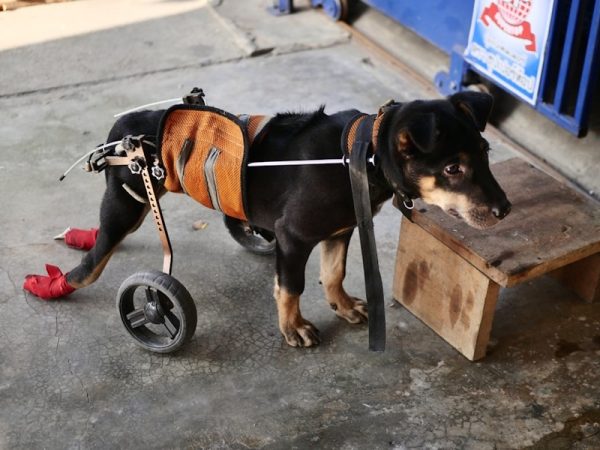Click to Skip Ahead
As a dog parent, we want our fur babies to stay fit and healthy forever, and it is sad and sometimes scary when something unexpected happens to them, especially as they age. It can be distressing to see our four-legged pal stumble or collapse unexpectedly due to their legs giving out. But what causes these episodes or the onset of weak legs, and should you be concerned?
You’ve landed on the right article, as we will delve into the common causes of dogs’ legs giving out to help you better understand what might be happening so that you can remedy the situation.
The 8 Causes of Dogs’ Legs Giving Out
Legs giving out or becoming weak can occur due to various reasons, ranging from temporary issues like fatigue to more serious underlying health conditions. While the following list is not exhaustive, it’s hopefully informative enough to strike resonance within you. If you are concerned about your dog’s health in any way, have your vet examine them as soon as possible. It is always better to err on the side of caution and be safe rather than sorry.
1. Muscle Weakness or Fatigue
Dogs, especially those not accustomed to intense physical activity, can experience muscle fatigue and weakness after prolonged exercise or play. This overexertion could cause your dog’s legs to give out. If you’re on a new health kick and decide to start taking your dog for long walks when this wasn’t a normal part of your routine, for example, you might need to slow things down and take it at a more gradual pace. Poor physical fitness or lack of regular exercise can contribute to muscle fatigue, thus causing your pet’s legs to give out.

2. Trauma and Injuries
Muscle and bone injuries don’t just happen to humans, they can happen to your dog as well. Overstretching or tearing of ligaments, tendons, or muscles can occur due to sudden movements or accidents. An even more serious concern includes fractures. Broken bones will impact your dog’s ability to use its legs properly. Any of these things could result in your dog’s legs being in pain and giving out on them.
3. Orthopedic Issues
Arthritis is one common cause of a dog’s legs giving out. Arthritis includes joint inflammation, pain, and/or degeneration of the cartilage, especially in older dogs, which can lead to difficulty in supporting their own body weight.
Another potential cause could be hip dysplasia. In certain breeds, hip dysplasia is a genetic condition that affects the hip joint’s development, resulting in joint instability, inflammation, and mobility issues.
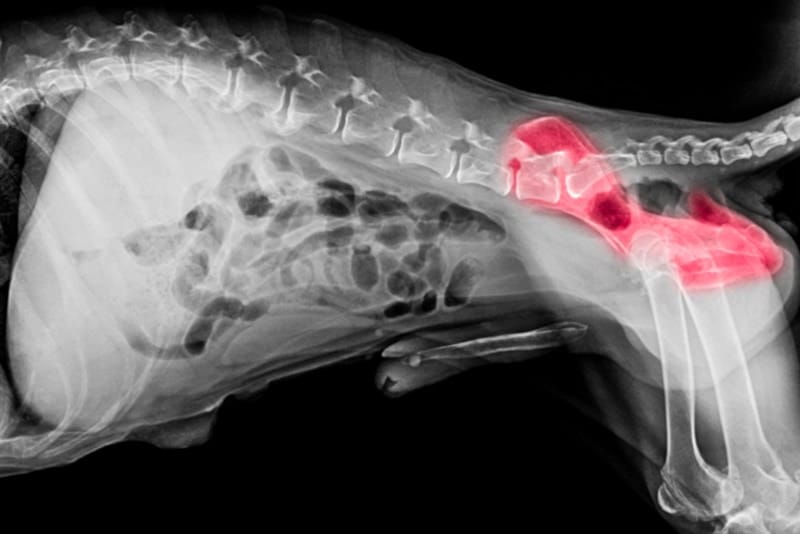
4. Infections and Diseases
There are many diseases that affect our dogs, even some that could make your dog’s legs give out. Some illnesses may cause joint swelling and pain, others can cause muscle weakness or paralysis. Any illness that leads to anemia can also be an issue.
5. Certain Health Conditions
Hypoglycemia (low blood sugar) is one health issue that can result in shakiness, weakness, sleepiness, and lethargy. Your dog could also be experiencing cardiac and circulation problems which can lead to decreased oxygen in the muscle, causing weakness. Disruptions in electrolyte levels can also affect muscle function. Other less common possibilities may include Addison’s disease or myasthenia gravis.

6. Toxicity/Poisons
Consuming certain substances or poisons, such as toxic plants or foods, can lead to problems with their hindquarters. You should always ensure that your pet has no access to dangerous plants in the house, or completely remove them from your home. Also, ensure that all potentially dangerous food items are stored off your counters and tabletops and in cupboards that your dog does not have access to.
7. Neurological Problems
Degenerative myelopathy is a progressive disease affecting the spinal cord, leading to weakness, incontinence, and loss of coordination in the hind limbs. Another potential cause could be intervertebral disc disease (IVDD), which is a spinal disc problem that can result in nerve compression, causing problems like weakness or paralysis in the legs. A diagnosis for these will need to be determined by a vet.

8. Age-Related Changes
Older dogs often experience weakness and mobility issues as a part of the aging process, just as we do! When your dog reaches their senior years, it’s a good idea to set up more frequent vet visits to ensure things are always working as they should and so that your vet can look out for any other issues that come with aging.

What to Do if My Dog’s Legs Give Out
If you notice that your dog’s legs are giving out or becoming weak or wobbly, stop whatever activity you’re doing and allow them to safely lay down. Give them some time to rest, if you can, while checking for other signs, then see how their legs react. If your dog is in immediate distress or unable to move at all, call for veterinary assistance or help straight away.
In less severe cases, checking for the following may help locate a cause. However, it is always best to seek the advice of a vet to ensure nothing too serious is going on, or to offer your dog relief from whatever they’re experiencing.
- Abnormal angles to the limbs
- Swelling
- Wounds, bruising or redness to the skin
- Foreign bodies stuck in the paw, such as thorn
- Any limping or lameness
- Difficulty getting up or slowness in walking
- Licking or nibbling at the legs, looking at the legs, or being generally irritated with them
- Any new or unusual behaviors
Treatment Options for Weak Legs in Dogs
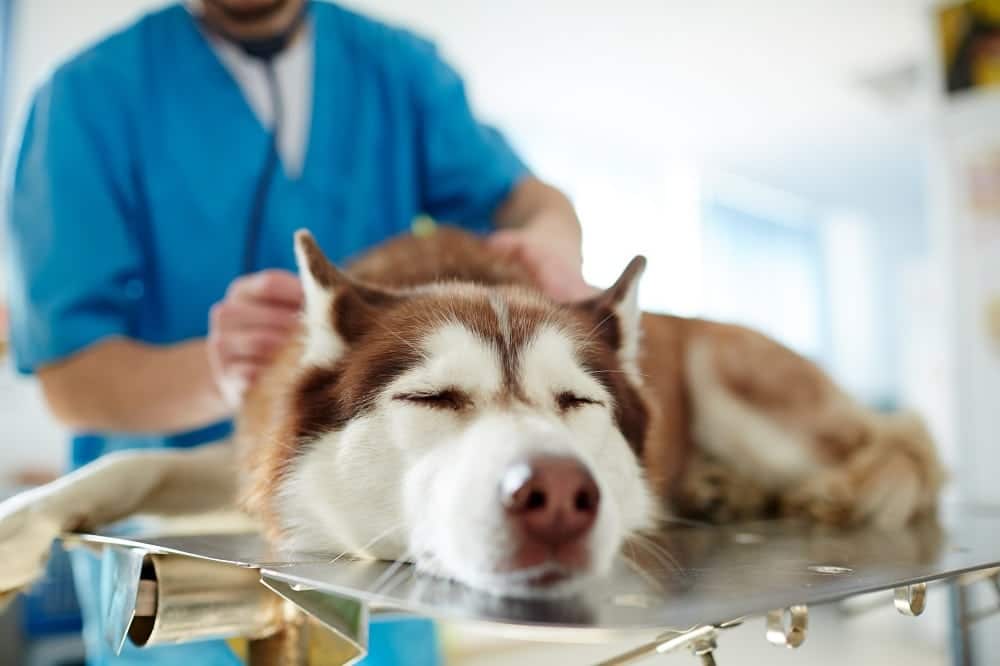
The treatment for weak legs depends on the underlying cause. Treatment can range from surgery for a fracture or IVDD, to antibiotics for an infection, to medication and lifelong environmental adjustments for arthritis. Some causes may require that you see a veterinary specialist and others may do well with a specialized therapy or rehabilitation program.
Preventing and Managing Dogs’ Legs Giving Out
While not all causes can be prevented, there are steps you can take to minimize the risk of it happening. Regular exercise, maintaining a healthy weight, feeding a correct diet, and avoiding excessive jumping can all help protect your dog’s joints and muscles.
Providing your dog with supportive bedding and a comfortable environment is advisable, especially for senior dogs or those with pre-existing conditions; for example, offer your senior dog an orthopedic bed or consider using a ramp or dog steps to help them get in and out of the car or on the bed. Additionally, regular veterinary check-ups can help detect early signs of weak legs, allowing for early intervention.
For managing leg weakness, physical therapy, weight monitoring, medication, and exercise may be helpful. Your veterinarian or a dog rehabilitation specialist can guide you on appropriate exercises and a regime, which may also include controlled walking, swimming, etc.
Frequently Asked Questions (FAQ)
How Do I Help My Senior Dog With Weak Back Legs?
Older dogs may be more prone to experiencing problems with their hind legs due to age-related conditions like arthritis or muscle wasting. If your older dog is struggling with their back legs, consider the following to help improve their quality of life, all while working alongside your veterinarian.
Adjust their living environment to make it more accessible. Ramps or mobile steps may be helpful for them to climb onto furniture or navigate stairs. Providing non-slip bowls and surfaces like rubber mats can also prevent slips and injuries.
Regular exercise is important, but it’s equally important to choose low-impact activities that won’t aggravate joints. Short, gentle, and frequent walks are ideal, as is swimming. Feed an appropriate diet for their age and any conditions they have, which your vet can help advise on, as well as any supplements they may feel will assist your elderly friend.
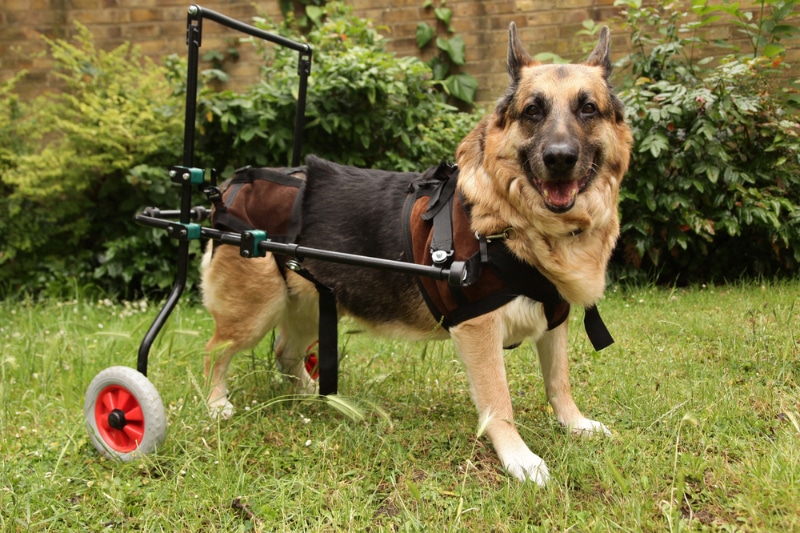
Will Pet Insurance Pay for My Dog’s Legs Giving Out?
Whether pet insurance covers the treatment for your dog’s legs giving out depends on your specific policy, when it was taken out, and the underlying cause of the condition. Some pet insurance plans may cover injuries or illnesses that result in leg weakness, while others may have specific exclusions or limitations.
It’s best to review your pet insurance policy carefully and understand the coverage it provides, along with any exclusions it has, including upper age limits. This is crucial if you are just taking shopping around. Your insurance provider will be able to discuss the details of your policy and any documentation required, and they will also assist with the claims process. They can provide information on how expenses are reimbursed as well.
Conclusion
Your dog’s legs giving out can be a distressing experience for all involved. Understanding the common causes behind it may help you feel more confident and give you peace of mind as you arrange treatment and care. Whatever the cause, early detection and proper treatment can make a large difference in your dog’s mobility and well-being. With the right care and veterinary attention, you can help your dog regain their strength and continue to enjoy a happy and active life.
Featured Image Credit: SO888, Shutterstock

